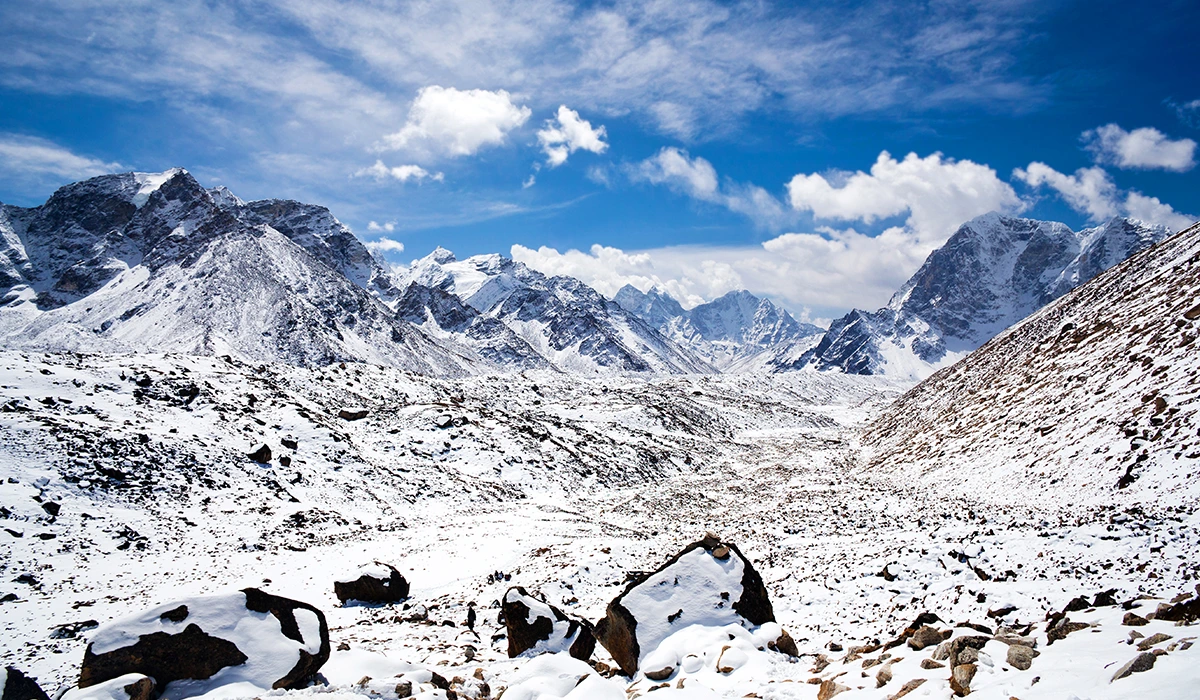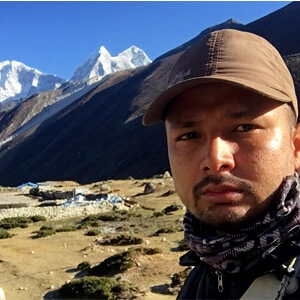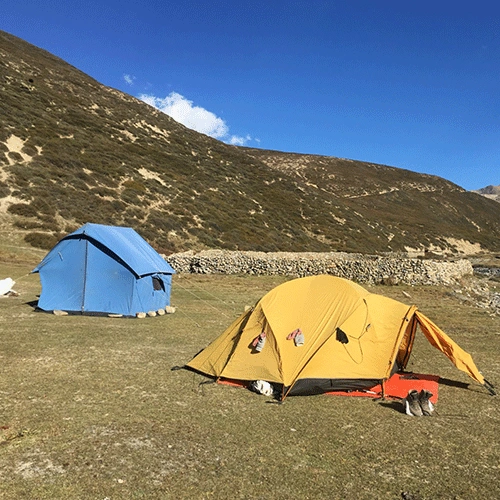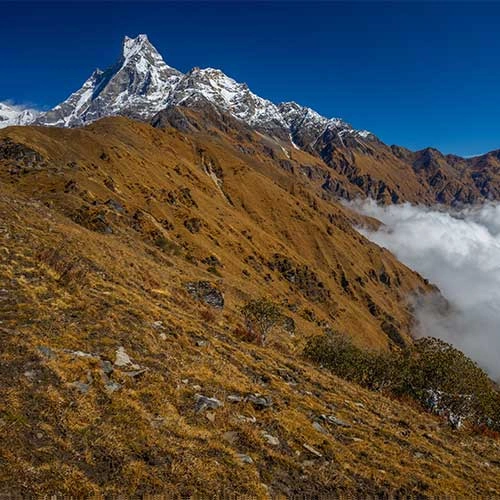What to Expect During Everest Three High Passes Trek?
- A short, scenic and thrilling flight between Lukla and Kathmandu.
- Accompanied by the stunning panorama of towering mountains in the Everest region from all sides.
- Traversing the Sagarmatha National Park, a protected area with a wide ranges of flora and fauna.
- Crossing the long swaging suspension bridges between the elevated hills adorned with vibrantly colored prayer flags fluttering in the breeze.
- Walking through the thick forests teeming with flowers, songbirds and different wild creatures.
- Experiencing diverse climatic zones within a single endeavor from subtropical to trans Himalayan.
- Acclimatizing at the popular Sherpa town of Namche Bazaar.
- Exploring almost every highlight of the entire Khumbu region through adventurous trekking trails.
- Conquering all three challenging high passes of Kongma La, Renjo La and Cho La and marveling at breathtaking Himalayan vistas from their top. All three passes are at an altitude above 5,300 meters.
- Venturing deep into the remote and secluded Himalayan regions and experiencing a solitary adventure on relatively less crowded trails.
- Visiting the historical monastery of Tengboche, which is the biggest in the whole Khumbu Valley.
- Passing through quaint Sherpa villages and bonding with friendly local people.
- Insights into the unique and rich culture, tradition, custom and way of life of the mountain communities.
- Walking past the longest Himalayan glacier, Ngozumpa Glacier.
- Traveling at a hidden Gokyo Valley and exploring a series of glittering alpine Gokyo Lakes.
- Hiking to the vantage point of the Gokyo Ri peak and enjoying the sweeping views of hills, valleys and mountains from there.
- Reaching the Everest Base Camp and enjoying the close range views of mighty Everest along with stunning Khumbu Icefall and Khumbu Glacier.
- Scaling the Kalapatthar viewpoint and soaking up the hypnotic sunrise view.
The Three Passes of the Everest Three Passes Trek
Cho La | Renjo La | Kongma La |
| Cho La Pass is technically more challenging than the other two passes. You will have to navigate the glacier before crossing this pass. You may require crampons for the slippery paths of Cho La Pass. It connects the Gokyo Valley and Khumbu Valley in the EBC trek routes. | This pass serves as a linking bridge between Thame Valley and Gokyo Valley. The icy and snowy trails of Renjo La take you to its top and reward you with amazing views of the Himalayan ranges, Gokyo Lakes and the Ngozumpa Glacier. | It is the highest pass among all three passes. Kongma La Pass links Chukhung Valley (east) and Lobuche Valley (west). It is against the Lobuche Peak, spanning across the Khumbu Glacier. |
The trails leading to the top of the Cho La, Renjo La and Kongma La passes are complex, with a mix of steep rocks, ice slopes and glaciers. It is best to start crossing all these passes early in the morning to avoid strong high winds and other unfavorable weather conditions.
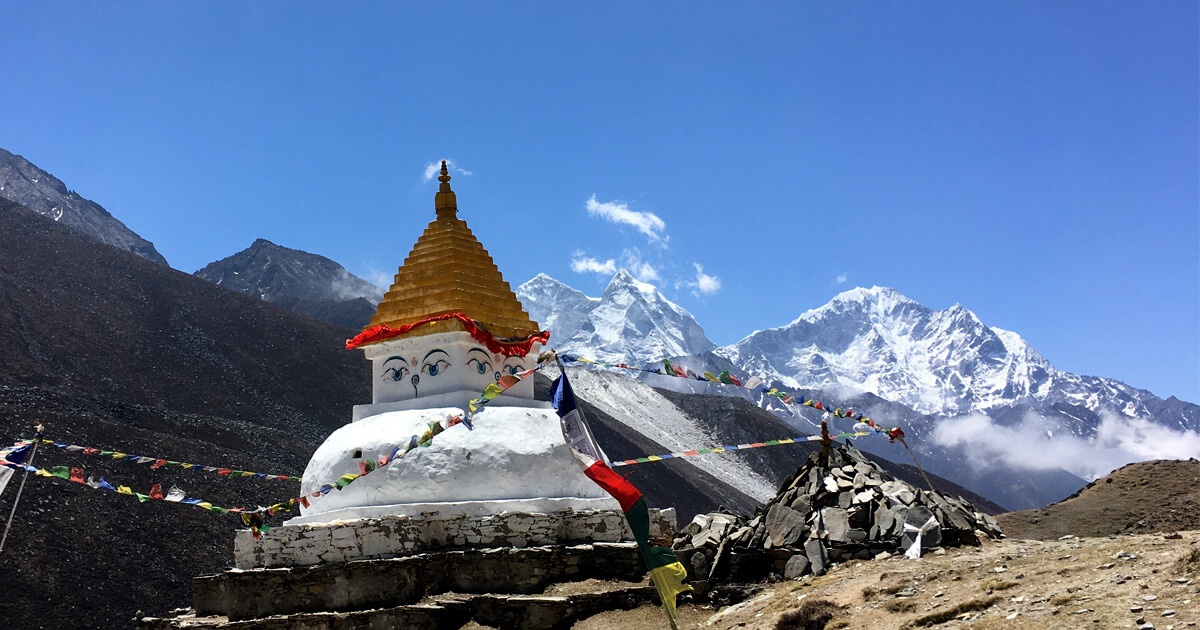
Major Difficulties of the Everest Three Passes Trek
High Altitudes
One of the challenging factors of the Everest High Passes Trek is the high altitude. It is an alpine Himalayan adventure that will introduce you to the breathtaking heights of the mountain. From the start of the journey you will start to gain elevation. While flying from Kathmandu (1,400 meters) to Lukla (2,860 meters), you will experience 1,460 meters of altitude gain within around 35 to 40 minutes.
Similarly, you will gain around 600 meters to 800 meters altitude within 7 to 8 hours daily. If you do not have prior trekking experience, this high altitude journey can be challenging for you to reach new heights every day. Besides gaining altitude, you will also experience some altitude loss within a similar range. If you are not habitual to fluctuating altitudes, you might struggle to adapt to the elevation shifts. Therefore, proper acclimation is important to let your body adapt to the varying elevations.
During this trek, you will navigate the three challenging high passes of Kongma La, Renjo La and Cho La, which are all above 5,300 meters. Likewise, while standing at the Everest Base Camp you will be at 5,364 meters. The high altitude viewpoint of Kalapatthar, which is also the trek’s maximum elevation, is 5,644 meters. Furthermore, the hike to Gokyo Ri Peak will take you to 5,357 meters. At these altitude points, there is a high risk of altitude sickness.
Risk of Altitude Sickness
Altitude sickness is a concerning factor during the high altitude journey of the Everest Base Camp Three Passes Trek. As you go higher in the altitudes, the air gets thinner. At significant elevations (over 5,000 meters), there is considerably less air pressure. Likewise, the level of oxygen in depleting air is very low. This makes it difficult to breathe and triggers the possibility of altitude sickness. So, there is a high threat of altitude sickness during this trek, which involves substantial elevation gain.
The symptoms of altitude sickness are usually seen after crossing 2,500 meters. Altitude sickness comes with symptoms such as:
- Headache
- Dizziness
- Nausea or vomiting
- Fatigue
- Loss of appetite
- Shortness on breathing
- Rapid heartbeat
- Difficulty in sleeping
While altitude sickness cannot be fully controlled, the chances of its occurrences can be somewhat minimized. You can consider the following preventive measures to keep altitude sickness at bay.
- Ascend to the altitude slowly by allowing your body adequate time to acclimatize.
- Stay well hydrated by drinking plenty of water and juices. You should drink at least 4 to 5 liters of water on a daily basis.
- Avoid smoking and consumption of alcohol and caffeine. This will cause dehydration and exacerbate the risk of altitude sickness.
- Take proper rest and sleep. Avoid the intake of sleeping pills.
- Eat healthy and nutritious meals that are rich in vitamins, proteins and minerals. Avoid heavy consumption of meat and packaged foods.
- Take frequent breaks to avoid overexertion. This will also help in the acclimatization process.
- Carry high energy bars and snacks for extra energy to ascend to the altitude.
- Get down to the lower familiar altitudes and stay there until the symptoms disappear. Only continue on the trek after being fully recovered.
- Take the Diamox tablet (altitude sickness medication) as a preventive measure.
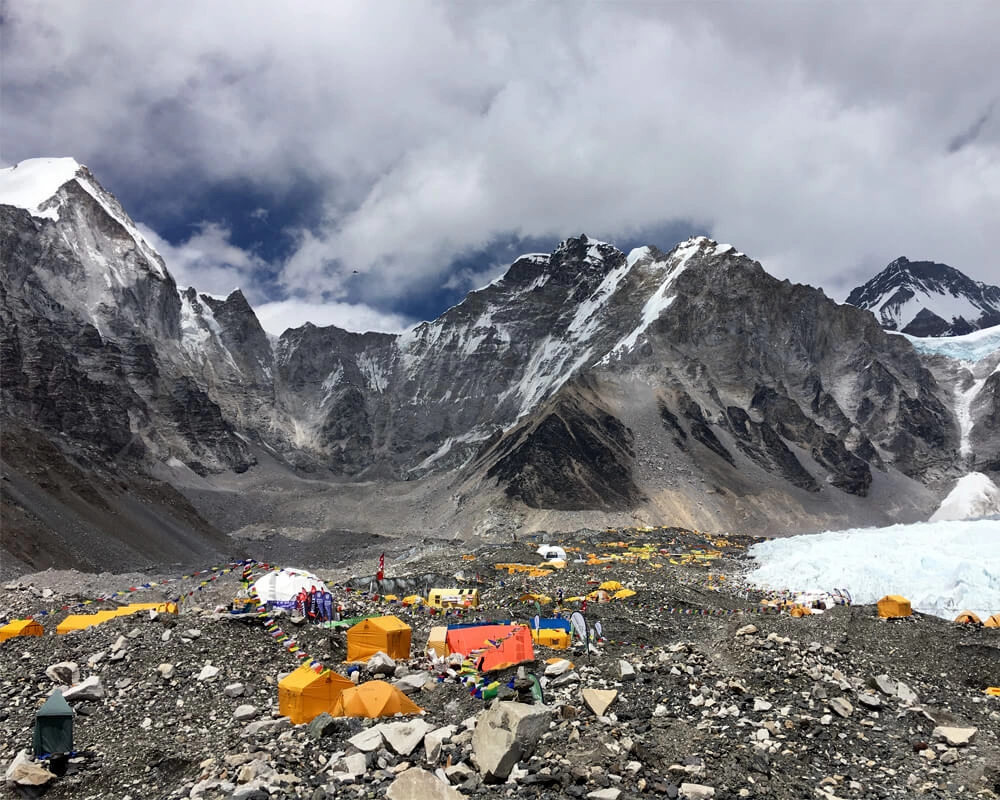
Unpredictable Weather Conditions
The weather in the alpine Himalayan region is unpredictable. It changes a lot, turning a bright sunny day to gloomy and wet in no time. Likewise, temperature rises and falls owing to weather changes. So, while embarking on the alpine adventure of Everest Three Passes Trek, you should be well prepared for the challenges of everchanging mountain weather and frequent temperature fluctuations.
The temperature at alpine elevations is extremely cold. If the temperature drops below freezing scale it can be quite unbearable. So, you should layer up with thick and heavy clothes to protect yourself from the notorious chill, especially during the night and early morning.
The flight between Kathmandu and Lukla can be canceled due to bad weather. So, while trekking in the Himalayan areas having a few extra days is important to cover the journey in case of interruptions. Plus, keeping regular weather updates is essential for making well informed decisions during the journey.
Remote Location
Remoteness is another factor adding to the Everest Three Pass Trek difficulty. During this trek, you will be traveling into the remote Himalayan lands that lack luxury. The only places you can have good meals and comfortable accommodation are small traditional teahouses after reaching a particular mountain village. As you ascend more, the availability of food and shelter decreases, but their price rises.
While facilities in well trodden EBC routes are up to the mark, teahouses along off the beaten trails leading to Gokyo Valley and three passes are not well established. So, you will have to prepare yourself to adapt to the simple lifestyle. Likewise, there are no proper banking or ATM facilities along the trekking trails. Electricity has also not reached every corner of the remote Himalayan settlements.
Moreover, the health facilities are limited, with only some small medical centers in lower region villages. On top of that, these healthcare facilities are not equipped with the required medicines. If you get a severe illness or accident in a high, secluded mountainous location, the only way to rescue you is by helicopter. All these factors accelerate the Everest Three Pass Trek difficulty.
Excessive Physical Exertion
While the Everest Three Passes Trek is undoubtedly adventurous and rewarding, the journey is lengthy and tiring. Endless routes and extreme terrains make the trek a wild ride. For almost three weeks, you will have to walk for about 7 hours daily on average.
The Everest Base Camp Three Passes journey is one of the toughest and most exhausting hikes in the Everest region. The trails involve several steep inclines with lots of twists and turns. To reach the high passes you will have to make your way through elevated hills, gigantic glaciers and loose rocks, which is indeed difficult.
Moreover, crossing three passes often involves glacier navigation. While traversing a glacier, you should finish before the sun gets too high. Intense sunlight can melt the ice, increasing the risk of avalanches and crevasse falls.
Rugged Trails
The Three High Passes trek is nothing like waking on plain Terai lands or moderate terrains of the mid hills. During the journey, you will traverse rugged terrains and make several steep climbs. There are also numerous descents on rocky and icy routes. The trek also involves walking through snow fields and melting glaciers. Moreover, you will have to pass through the landslide prone areas, which could be challenging.
Traversing the rugged mountainous terrains is strenuous, drains your physical strength and cause mental fatigue. So, you need to upgrade yourself both physically and mentally to overcome and pass through difficulties.
How To Prepare for the Everest Three Pass Trek Difficulty?
Physical Training
The 18 days long Three Passes Trek in rugged mountainous locations is undeniably tough and exhausting. It takes high endurance capacity and considerable stamina to complete the each day hike. To deal with and overcome the challenges that arise along the way, you need to be physically sound.
The ideal way to prepare for the extended hours of walks on the uneven mountainous trails is to start by hiking on local trails. Plus, gym workouts will make you more stable, strong and resilient in rugged terrain. Furthermore, consider engaging in cardiovascular exercises and strength workouts that help your body stay fit and energetic and have proper stamina.
Right Gear
For an adventurous journey in the high altitude Himalayan locations, you should be clear about what things to carry. Your packing is affected by the time of the year you are traveling. Depending on the weather and temperature of a particular season, you can define your packing lists.
While packing, including too much or too little can lead to a difficult journey. So, make sure to pack all the necessary items while keeping a backpack weight manageable. Only include the appropriate gear and clothing required for the journey and consider emphasizing durable and multifunctional ones.
A well packed backpack ensures maximum comfort by allowing you to retrieve things easily whenever needed. Before setting off on the Three Passes adventure, you should check whether you have packed everything essential. We recommend you pack your clothes in a layered approach, comfortable footwear, a First Aid Kit, snacks and water, essential documents, personal hygiene and toiletries, electronics and trekking gear.
Mental Preparation
Self motivation, strong determination and a positive mindset are key to a successful adventure in the remote and secluded mountains. Your mental preparation starts by researching about the trekking destination and understanding its trails, terrains and weather patterns. This will help you have an as expected experience during the trek. Likewise, building resilience and courage to move forward through challenges can transform obstacles into opportunities and ultimately let you achieve triumph.
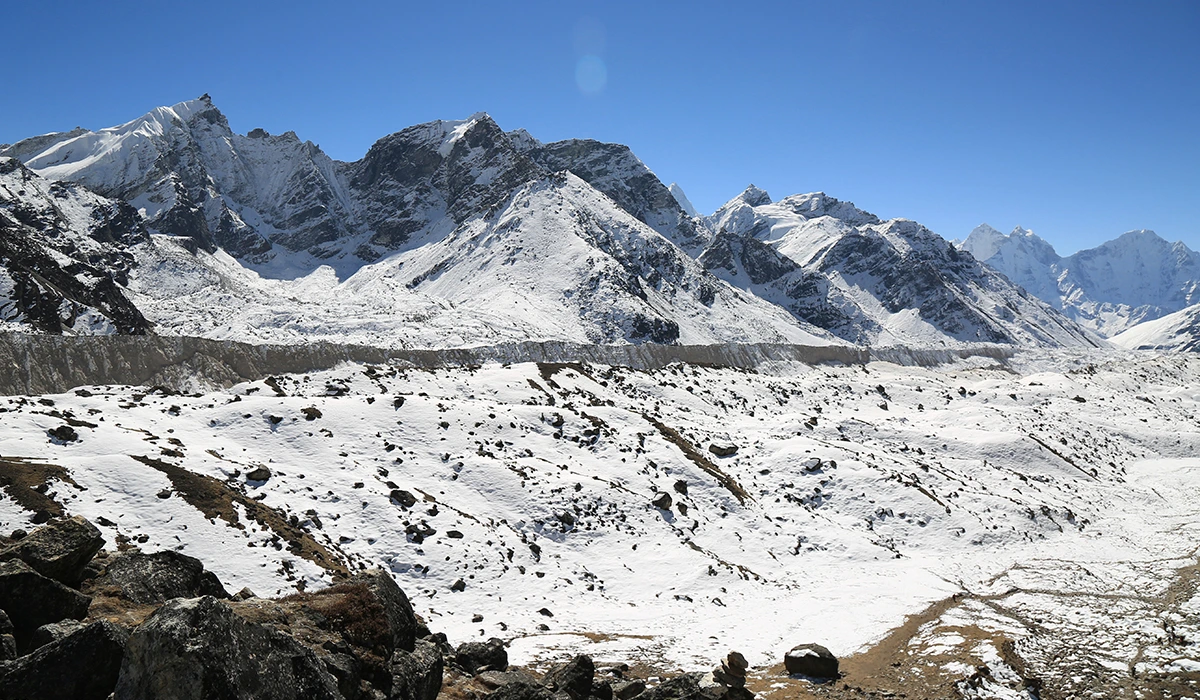
What Can Be Done to Minimize the Difficulties of the Everest Three High Passes Trek?
Opting for a Reputed Trekking Agency
The primary way to reduce the Everest Three Pass Trek difficulty is by contacting an authorized travel partner. The best way to travel in the remote mountains is to buy comprehensive packages from a reputed trekking agency. We offer organized trips and provide you with a personalized experience by considering your interests, needs, preferences, budget, time and abilities.
We will make all the logistics required for the trek readily available to you. You do not have to worry about anything from permits and transportation to food, accommodations, guides and all. Leaving everything to us, you can just focus on making your mountain odyssey an adventurous, exhilarating and memorable one.
Choosing the Right Time for the Trek
Nepal presents diverse climatic zones. You will find tropical climates in the lowlands, temperate in the midhills and frigid in the high Himalayas. While the mountain weather is everchanging, you can expect it to be quite stable during peak trekking seasons of spring and autumn.
The pre monsoon season of spring starts in March and lasts till May and the post monsoon fall season begins in early September and ends in November. Trekking the Three Passes of the Everest region at this time will treat you to the unobstructed views of the mountains. You can see the beautiful snow covered Himalayas vividly smiling against the clear and deep azure sky.
You are less likely to encounter the harsh climate conditions at this time. There is less probability of heavy rain or snow and high winds, making your trek relatively easier. Similarly, the temperature at this time will be moderate, not as hot as in summer and not extremely cold as in winter. So, the favorable seasons of spring and autumn will allow you to enjoy a comfortable high altitude trek.
The services in the teahouses are at their peak to accommodate huge tourist inflow. However, it is wise to book the accommodation beforehand to secure a spot as lots of trekkers visit the region at this time.
The three passes can be difficult to navigate in winter due to the huge accumulation of snow. Likewise, in monsoon, the lower region trekking trails are usually muddy and slippery due to heavy rainfall. You do not get a good grip and keep sliding while walking wet routes. So, it is better to skip these two seasons for this alpine journey.
Proper Rest and Effective Acclimatization
The journey at high altitudes for a prolonged time can be tough without proper rest and acclimatization. Rest is essential to recover from fatigue and upgrade your physical and mental well being. You can get time to catch your breath in a relaxing way, enjoy the surroundings and hydrate and have light snacks. Resting keeps your energy levels balanced and lets you continue the journey without feeling overly tired.
Likewise, effective acclimatization is the outcome of proper rest or a relaxed pace. If you walk and ascend to the altitude slowly, it will provide ample time for the body to cope with the changing elevations. This will ultimately elevate the risk of altitude sickness.
Hiring an Experienced Guide and a Local Porter
Guides and porters are helpful professionals who will make your trek easy and safe. Porters and guides are assigned to different roles. While porters carry your luggage, guides help you to complete the journey with assurance of your safety. Beyond making the trek achievable, they also ensure your journey is smooth, comfortable, immersive, informative and enjoyable.
Guides and porters help you with navigation, safety and logistics, letting you freely and openly enjoy the scenery along the way. While the seasoned trekker can achieve victory even without the help of a guide or a porter, the experience of the adventure, however, will not be the same. If you are a beginner trekker, do not even think of going on this challenging Himalayan adventure without being accompanied by an experienced guide and a strong porter.
Finding a guide and porter who is familiar with the local routes, weather patterns and more is essential. For effective communication, your guide and porter should be fluent in English. Or you can also choose those who know and understand your native language. If you are trekking with a registered and dependable trekking company, you do not have to bother finding a guide or a porter. They will arrange you a knowledgeable and professional trekking guide and a strong porter from the local trekking destination.
